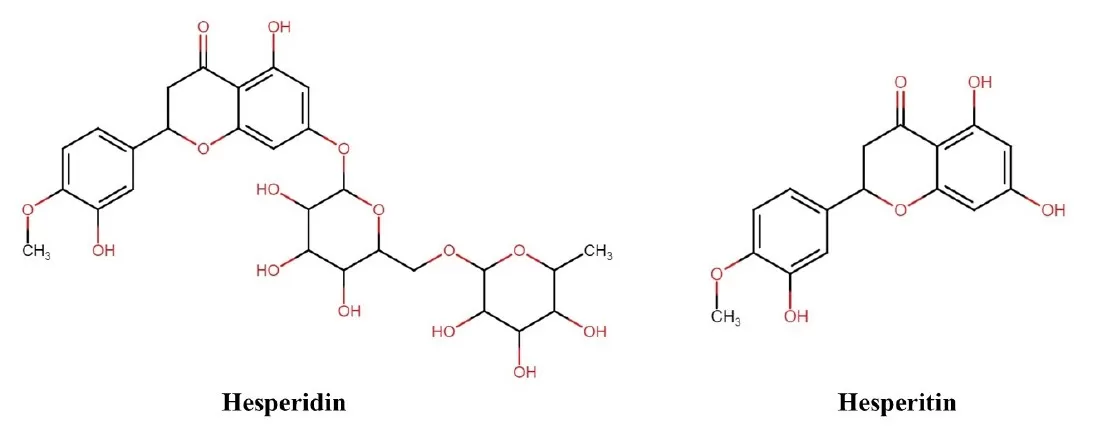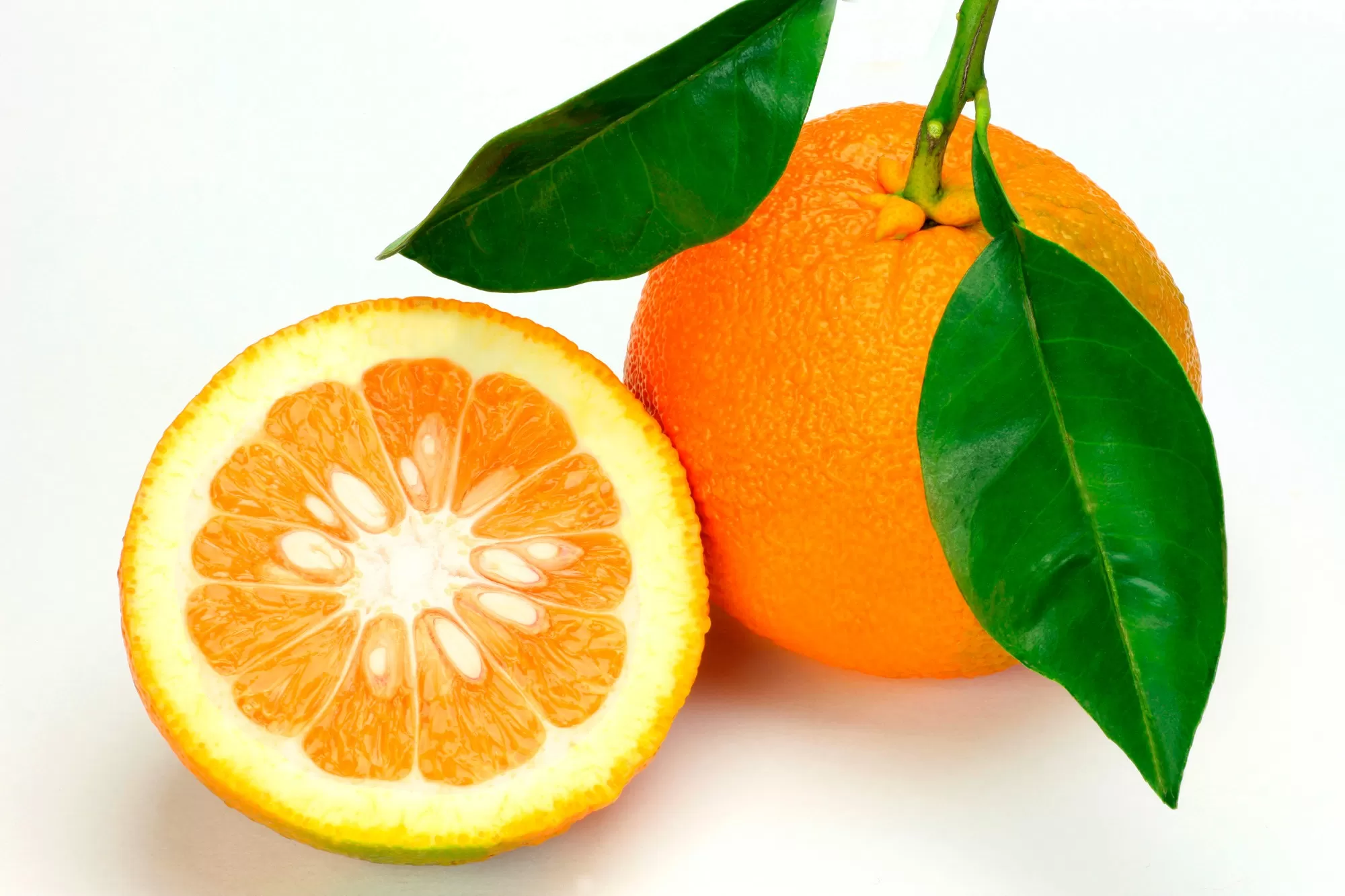- 0086-571-85302990
- sales@greenskybio.com
Diosmin-Hesperidin: Exploring Their Therapeutic Uses and Benefits
2025-03-23

The pursuit of health and wellness often leads individuals to explore natural compounds with broad therapeutic potential. Diosmin and Hesperidin are two such compounds, classified as flavonoids, which are primarily found in citrus fruits. These compounds are often used in combination to enhance their efficacy, particularly in addressing vascular health issues. With their potent antioxidant and anti-inflammatory properties, Diosmin and Hesperidin have gained prominence in both traditional and contemporary medicine. This article explores the therapeutic uses of Diosmin-Hesperidin, highlighting their benefits and expanding applications in healthcare.
Understanding Diosmin and Hesperidin
Diosmin and hesperidin belong to the flavonoid family, a diverse group of plant-derived compounds known for various health-promoting effects. Hesperidin is naturally present in the peels of citrus fruits such as oranges, lemons, and grapefruits. Diosmin is often derived from hesperidin through a process of molecular modification, which improves its potency and bioavailability.
The synergistic combination of diosmin and hesperidin is frequently referred to as micronized purified flavonoid fraction (MPFF). This formulation enhances the absorption and therapeutic impact of the compounds, making them effective tools in the management of vascular disorders and other health conditions.

Therapeutic Uses and Benefits
1. Chronic Venous Insufficiency (CVI)
One of the primary applications of diosmin-hesperidin is in the management of Chronic Venous Insufficiency (CVI), a condition characterized by poor blood flow in the veins, particularly in the lower limbs. Symptoms of CVI include leg heaviness, swelling, pain, and varicose veins. Diosmin-hesperidin improves venous tone, reduces capillary permeability, and promotes lymphatic drainage, leading to symptom relief and improved quality of life for individuals affected by CVI. Clinical studies have demonstrated that consistent use of these compounds can significantly alleviate CVI symptoms.
2. Hemorrhoidal Disease
Diosmin-hesperidin is also widely used in the treatment of hemorrhoids, which are swollen veins in the rectal area that cause discomfort and bleeding. The venotonic and anti-inflammatory effects of diosmin-hesperidin help strengthen the venous walls, reduce inflammation, and accelerate healing. Research has shown that patients experience reduced pain, bleeding, and recurrence when using diosmin-hesperidin during both acute and chronic hemorrhoidal episodes.
3. Lymphedema and Post-Surgical Edema
Lymphedema, characterized by swelling due to impaired lymphatic drainage, can hinder movement and cause discomfort. Diosmin-hesperidin enhances lymphatic function, facilitating fluid drainage and reducing swelling. This benefit is also applicable to post-surgical edema, where these compounds can aid in recovery by minimizing localized inflammation and swelling, leading to quicker healing and improved mobility.

Mechanisms of Action
Diosmin-hesperidin exerts its effects through multiple mechanisms. It acts as a venotonic agent, increasing the contraction of venous smooth muscles and thereby improving vein tone. Additionally, it inhibits leukocyte activation and adhesion, which decreases inflammation. Diosmin-hesperidin also improves microcirculation by reducing platelet aggregation and lowering capillary permeability, ensuring optimal nutrient and oxygen delivery to tissues.

Antioxidant and Anti-inflammatory Properties
Beyond vascular benefits, diosmin and hesperidin are powerful antioxidants that combat oxidative stress, a contributing factor to various chronic conditions like cardiovascular diseases, diabetes, and cancer. Their antioxidant activity involves the scavenging of free radicals, thus protecting cellular health. The anti-inflammatory properties further enhance their therapeutic efficacy, aiding in the management of diseases where inflammation plays a critical role.

Emerging Research and Future Prospects
The therapeutic landscape of diosmin-hesperidin continues to expand as research explores their potential roles in conditions such as diabetic retinopathy, microvascular complications, and neurodegenerative disorders. Early studies suggest these compounds may offer systemic benefits that support diabetic vascular health, reduce retinopathy progression, and provide neuroprotective effects through anti-inflammatory pathways.
Safety and Considerations
Diosmin-hesperidin is generally well-tolerated, with mild side effects such as gastrointestinal discomfort being rare. It is essential for individuals to consult healthcare professionals before starting therapy, particularly when dealing with concurrent medical conditions or during pregnancy.
Conclusion
Diosmin-hesperidin represents a powerful duo in the realm of natural therapeutics, offering diverse applications primarily in vascular health. Their benefits in managing conditions marked by venous insufficiency and inflammation underscore their significance in contemporary medical practice. As research progresses, diosmin-hesperidin's role is likely to expand, offering innovative solutions to prevalent health challenges and highlighting the invaluable contributions of natural compounds to advancing human health and well-being. By understanding their mechanisms and applications, individuals and healthcare providers can utilize these flavonoids effectively, supporting better health outcomes.
- ▶ Hesperidin
- ▶ citrus bioflavonoids
- ▶ plant extract
- ▶ lycopene
- ▶ Diosmin
- ▶ Grape seed extract
- ▶ Sea buckthorn Juice Powder
- ▶ Beetroot powder
- ▶ Hops Extract
- ▶ Artichoke Extract
- ▶ Reishi mushroom extract
- ▶ Astaxanthin
- ▶ Green Tea Extract
- ▶ Curcumin Extract
- ▶ Horse Chestnut Extract
- ▶ Other Problems
- ▶ Boswellia Serrata Extract
- ▶ Resveratrol Extract
- ▶ Marigold Extract
- ▶ Grape Leaf Extract
- ▶ blog3
- ▶ blog4
- ▶ blog5
-
what is hesperidin supplement
2025-03-23
-
what is glucosyl hesperidin
2025-03-23
-
Hesperidin: Uses and Benefits
2025-03-23
-
what does hesperidin do
2025-03-23
-
what is hesperidin complex
2025-03-23
-
What is Diosmin Hesperidin?
2025-03-23
-
What Is Hesperidin Good For?
2025-03-23
-
Red Date Extract
2025-03-23
-
Konjac Powder
2025-03-23
-
Cassia Seed Extract
2025-03-23
-
Quercetin
2025-03-23
-
Acerola Juice Powder
2025-03-23
-
Grape Leaf Extract
2025-03-23
-
Thunder God Vine Extract
2025-03-23
-
Avocado Extract Powder
2025-03-23
-
Marigold Extract
2025-03-23
-
Scutellaria Extract
2025-03-23






























